At the beginning of this month, I had the pleasure of attending my first ever American Meteorological Society (AMS) meeting in Austin, Texas. In addition to it being my first meeting as an attendee, it was my first meeting as a presenter; an opportunity I owe to NSF funding as a part of the NWC REU experience. My project was titled “An East Coast Winter Storm Climatology and Projected Future Trends” and I was mentored by two very talented females in the field: Dr. Elinor Martin and Elizabeth DiGangi, PHD candidate both from University of Oklahoma School of Meteorology.
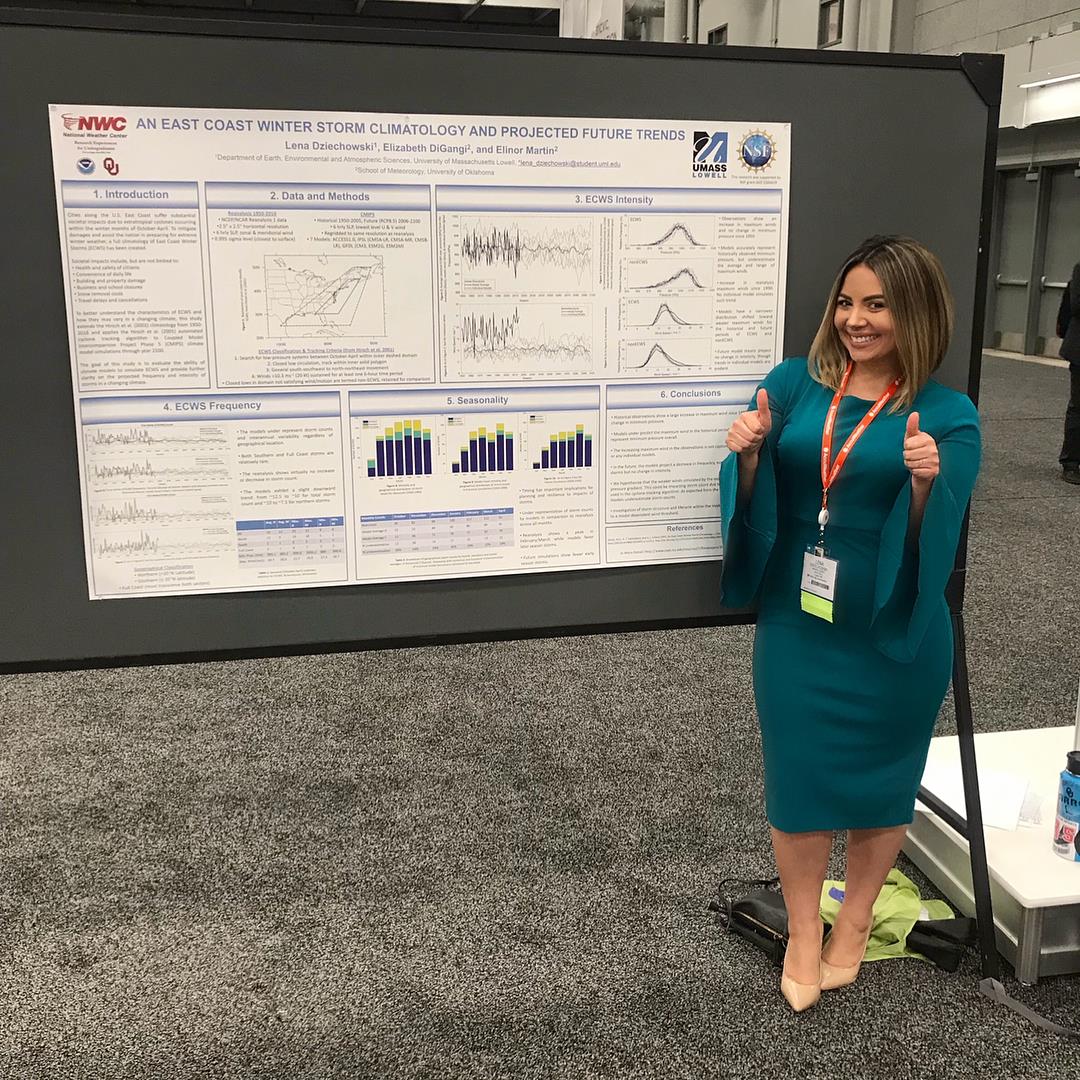
The research was completed last summer at the National Weather Center in Norman, Oklahoma over the course of 10 weeks. The motivation for the research stemmed from the fact that densely populated cities along the U.S. East Coast suffer substantial societal impacts due to extratropical cyclones occurring within the winter months of October-April.
Societal impacts include, but are not limited to:
- Health and safety of citizens
- Convenience of daily life
- Building and property damage
- Business and school closures
- Snow removal costs
- Travel delays and cancellations
In fact, I almost didn’t make it to AMS to present this research because a full coast winter storm (relatively rare within the dataset) caused flight delays and cancellations across the country. Many of my peers did not make it until days later, if at all. The goal of the study was to evaluate the ability of climate models to simulate East Coast Winter Storms and provide further clarity on the projected frequency and intensity of storms in a changing climate. However, rather than make this blog post a repeat of my poster or paper, which can be viewed in full here, I wanted to reflect on my experiences and interactions… and share some of my favorite talks.
The weekend started out with the student conference, which was a great way to ease into the feel of AMS. It also allowed for plentiful opportunities for students to gain insight to many unanswered questions and the uncharted territories of the world of Meteorology. The breakout sessions offered a vast amount of freedom to explore individual interests. By the end of the student conference I was already busting at the seams with information, not even realizing that I had to buckle up for the real magic that would begin on Monday. The student conference highlights for me personally were definitely the Keynote Speaker, Katharine Hayhoe and the Presidential Forum, Richard Alley.
Katharine Hayhoe (once named Time’s person of the year), was also delayed due to weather implications and joined us electronically. She delivered a compelling talk on how to communicate scientifically in the face of controversy. She addressed the disconnect between the fact that though most American Adults agree that global warming is real, they aren’t talking about it. Not only that, they do not believe it is caused by humans, and they also do not think it will harm them personally. So how do we move the needle? How do we connect the two concepts? How do we respectfully deliver information? By using both our head, AND our hearts. By providing undeniable factual evidence. By listening, and finding a way to bond amongst the separation. Here are some of my favorite quotes and slides from her talk:
“Arguing doesn’t build a bridge, it digs a trench. When you talk solutions, you find much more common ground.”
“We might disagree on how we get these things, but we agree that we want them and that they are important: jobs, safe housing, clean air and water, plenty of food.”
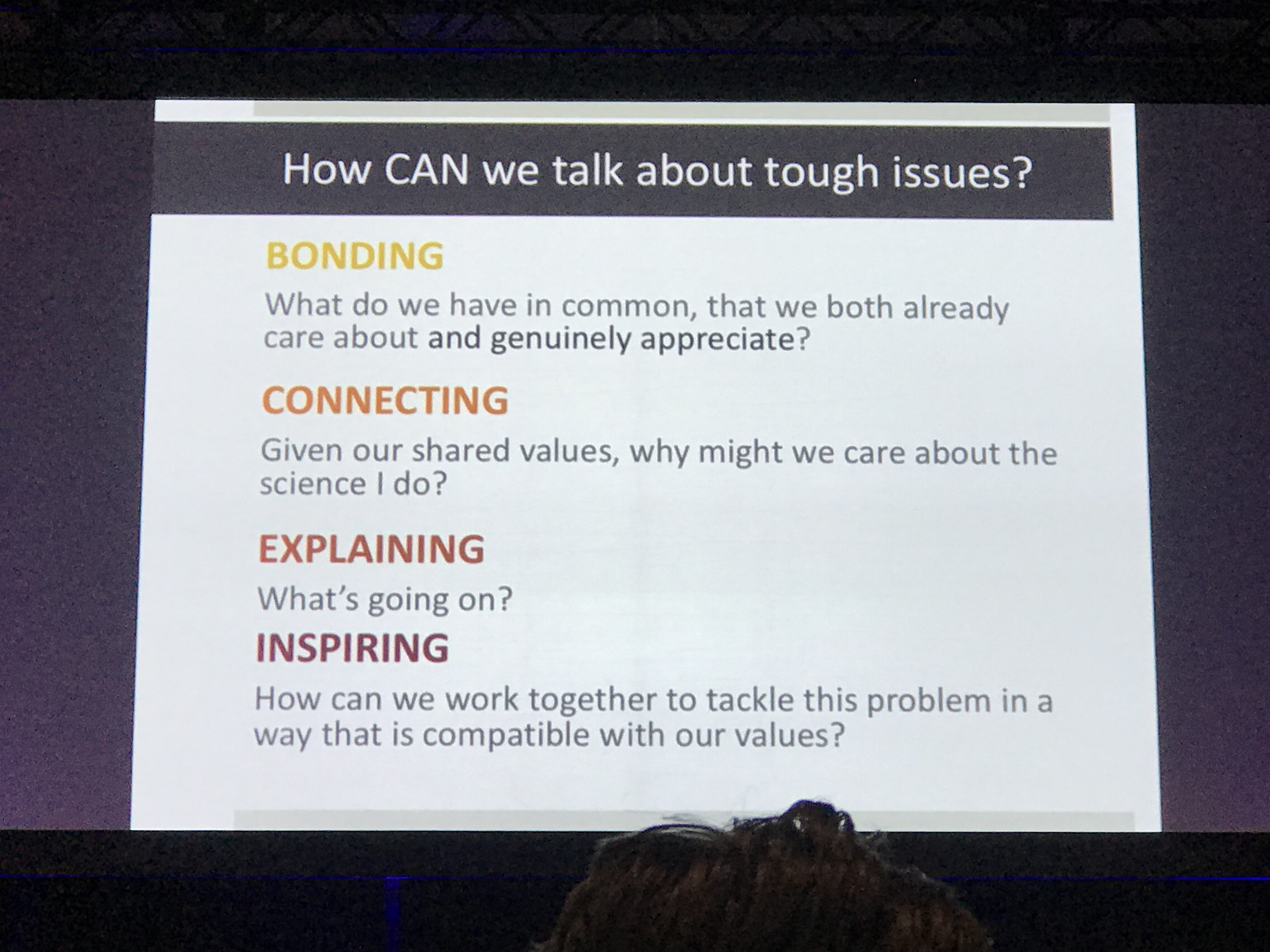
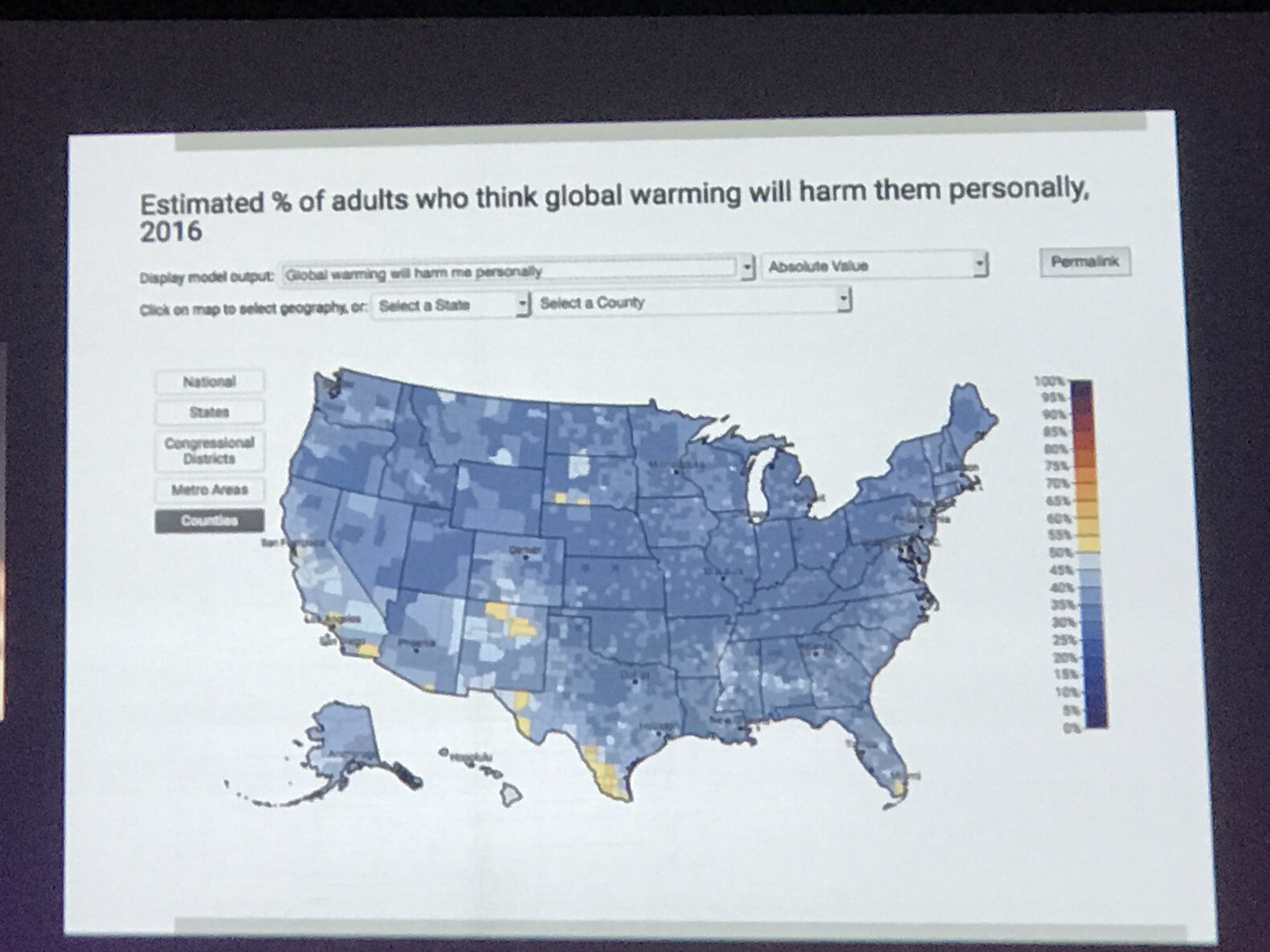


Richard Alley gave a whimsical and comical address also on climate change, but with a different twist and excessive imagery of penguins (just for fun). He broke down how history shapes the way we view and believe things, including climate change and how various biases may affect our opinions. He also correlated climate science advances and the resources needed to create the technology which people use every single day to this issue. You can watch his talk in full here.
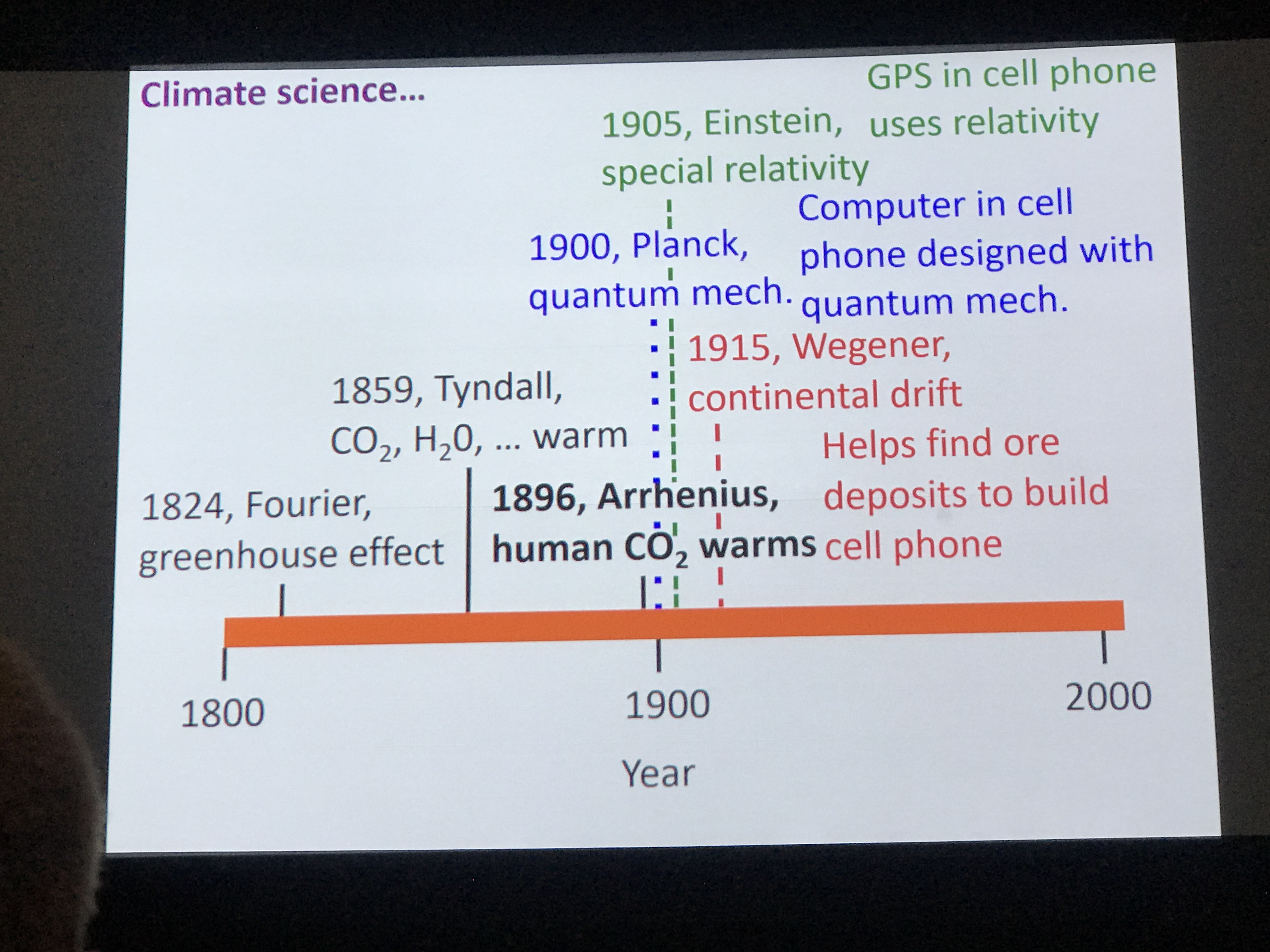

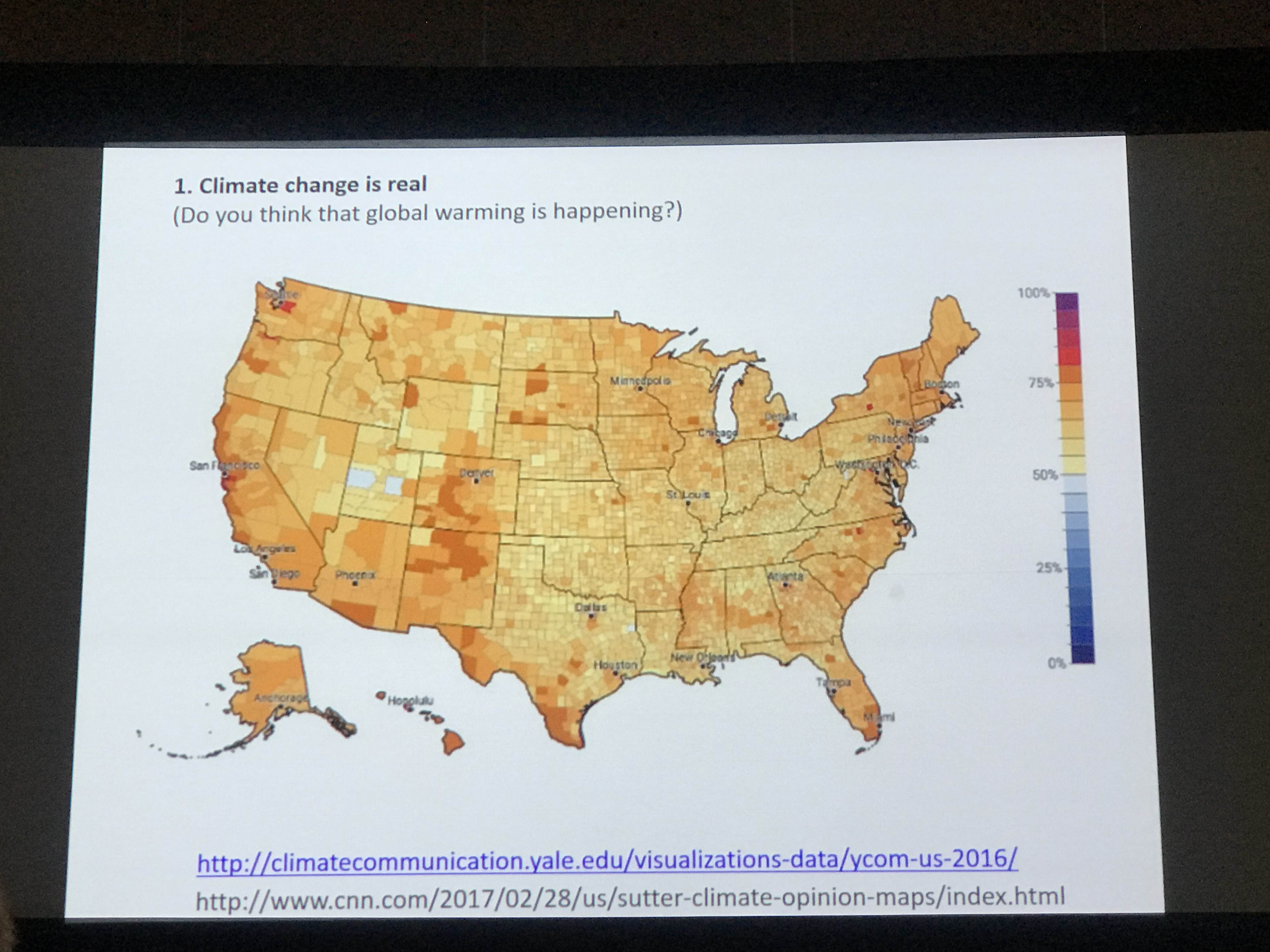
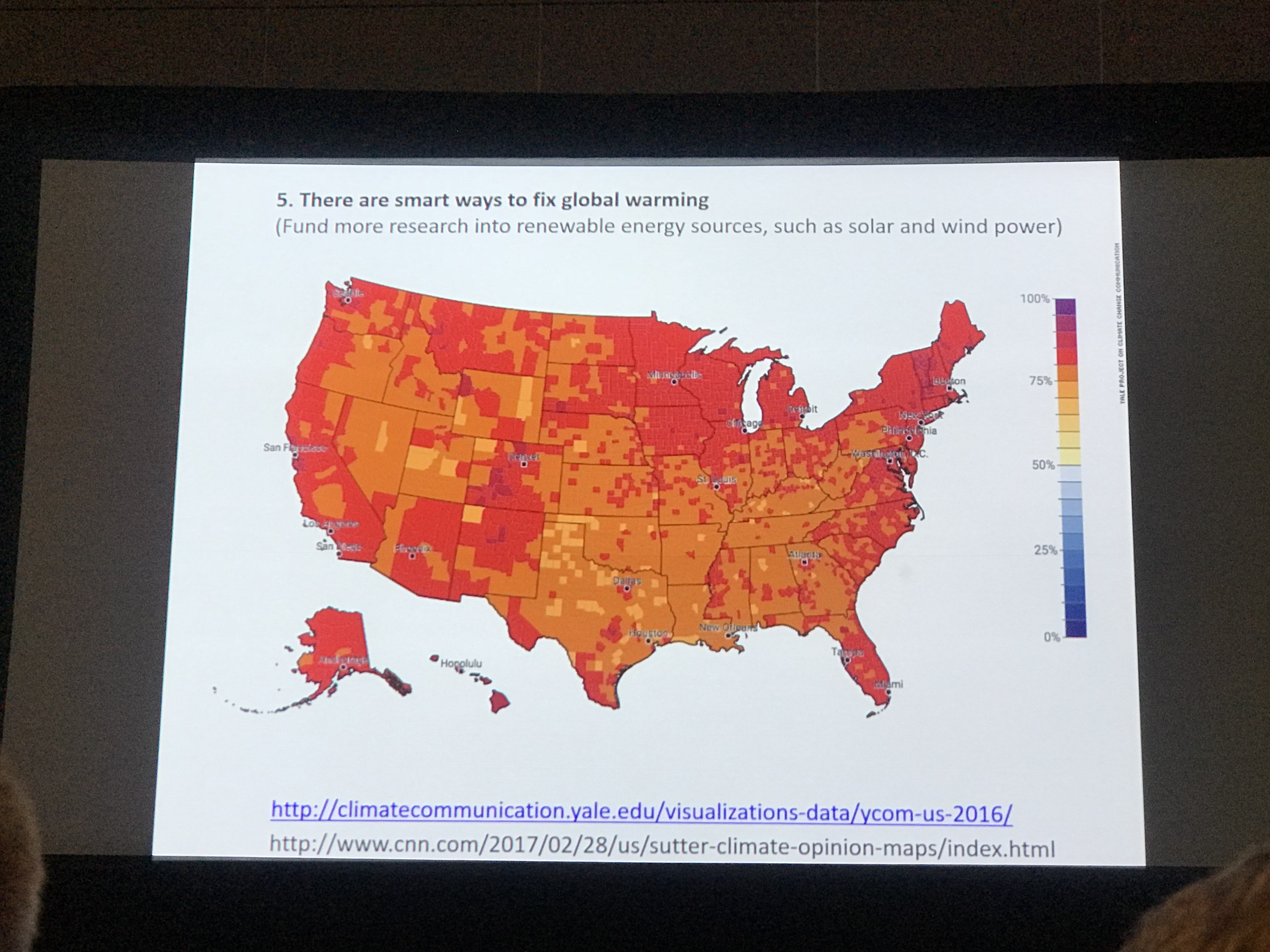
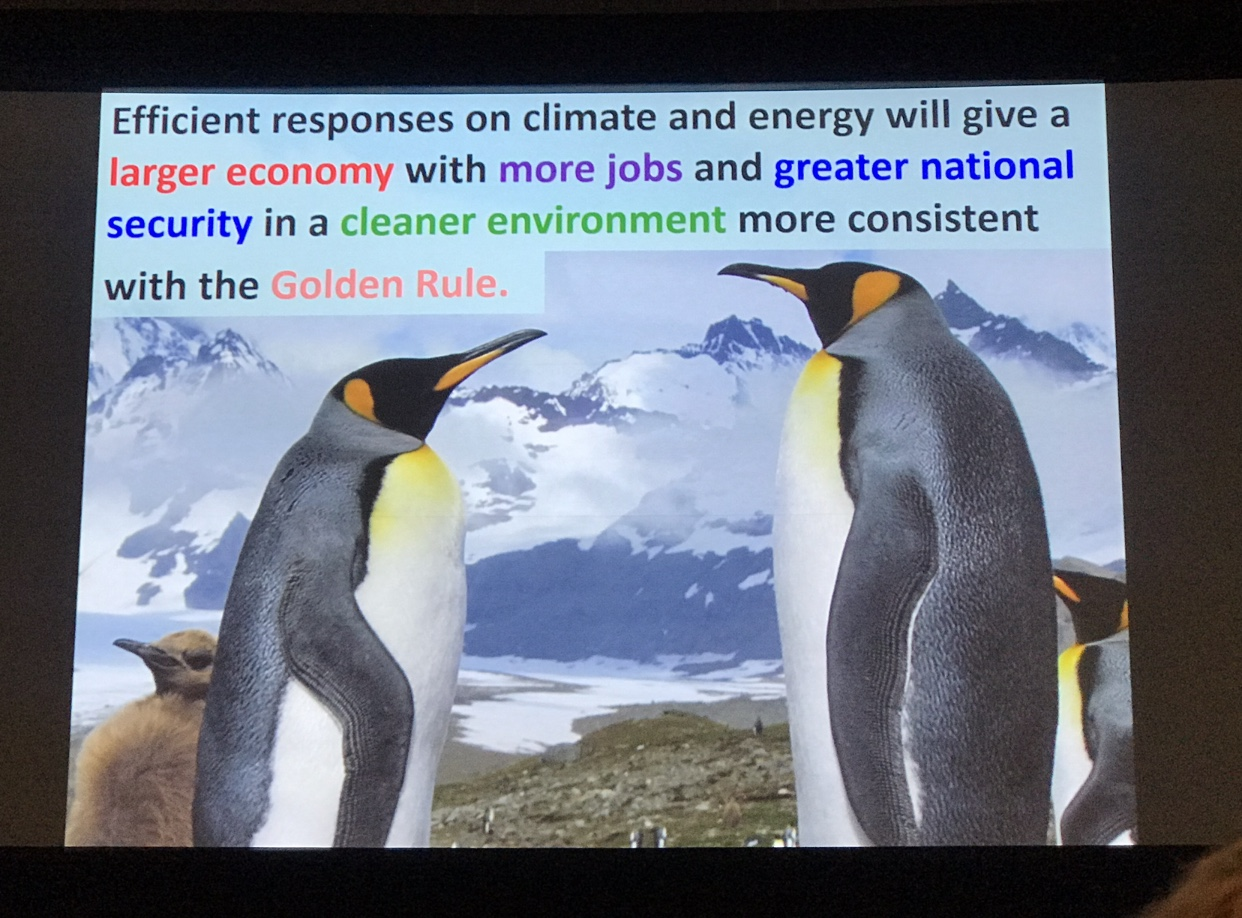
The absolute number one highlight of the week for me was the 2017 Hurricane Review which quickly became the buzz of AMS. The talk took place on Monday during the lunch break. I skipped lunch in order to attend. What I was rewarded with was one of the most powerful and emotional moments of my Meteorology career to date. Though the entire panel was compelling, Ada Monzon’s account of the Hurricane Maria damage in Puerto Rico left the entire room in tears, Dr. Marshall Shepherd completely speechless and earned her a standing ovation. I couldn’t even come close to bringing it justice if I tried to put it into words, but being in that room and being able to experience that was something that I will remember for the rest of my life. Thankfully, they have made the discussion in full available on youtube (here). I will undoubtedly watch it again at some point in my life, probably several times. I encourage you to watch it in its entirety as all the speakers were phenomenal, however fast forward to 1:12 to hear Ada Monzon’s address.

Above photo source credited to Wes Rapaport (@wesrap on Twitter).
The week ended with an awards banquet dinner in which almost 5,000 scientists got to have dinner together. How cool is that?! Dr. Marshall Shepherd has been quoted referencing AMS as a “Meteorologist’s bucket list dream”. I now fully understand why. There is so much knowledge and passion under one roof. We all have common goals and are working towards achieving similar things. Everyone was so insanely kind and welcoming, regardless of if they are just starting out in the field as students or whether they have been at it for decades. The most tenured and decorated scientists embraced moments with the future of Atmospheric Science. And I think that is what left me the most inspired, the networking component and the connections and relationships that I was able to build. Realizing that people that I have idolized and looked up to are human just like me. One of my favorite quotes of the week was: Chief Meteorologist Alan Sealls when asked how it feels to be declared the “Best Weatherman Ever”: “I still take out the trash.” For those of you that were unable to attend, I hope that this post provided at the very least a small window of insight into just how miraculous these yearly meetings are. I look forward to attending next year in Phoenix, and for many years to come.
-Lena Dziechowski, current Atmospheric Science Junior and AMS Secretary
